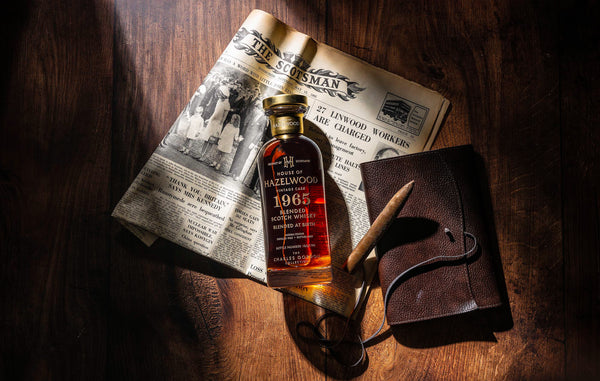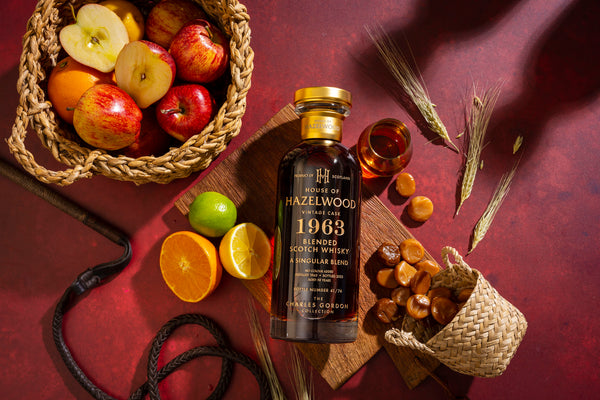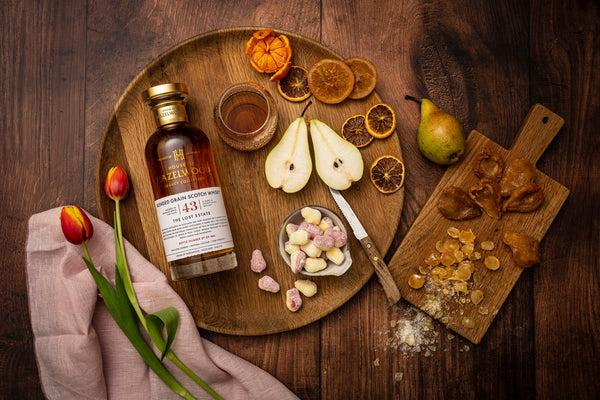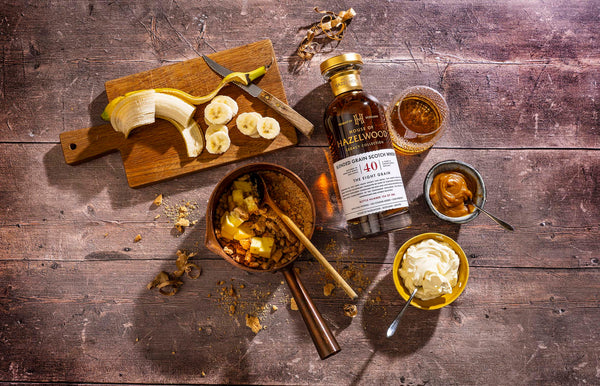Really old Scotch is a rarity today. With few bottles remaining of a time gone past, there are many reasons these styles of golden nectar can never be produced again. From law to distillery closures, we explore the reasons we will never see these types of whisky again.
As demand for Scotch Whisky continues to grow globally, an increasing number of producers are setting their sights on improving efficiencies and spirit output, catering to the mainstream demand of popular age statements and mixable propositions. But, with such a focus on a core offering, the availability of aged and old Scotch, especially those which are fifty years and above, is becoming noticeable rarer due to dwindling stocks.
Thankfully, the expansive inventory from the House of Hazelwood means a connoisseur of well-aged whiskies is spoiled for choice, but even so, there drops of liquid gold are unlikely to be seen again for many more reasons than merely availability. In this feature, we look at some of the reasons we’ll never see rare old Scotch like this again.

Reason #1 – The Law
To produce Scotch Whisky, a certain set of laws must be adhered to. At its most fundamental, it must made in Scotland and matured in oak casks for a minimum of three years and one day before it can legally take on the moniker of Scotch Whisky.
But there are lesser known, more detailed laws around the production of Scotch Whisky, many of which came in practice in 2009 as part of a revision to the regulations, an essential update designed to continue to protect the integrity of Scotland’s national drink.
Whilst these laws afforded a new element of creativity for whisky makers, it also prohibited previous practices from the century prior, meaning that certain aged and old whiskies - which could still be sold as they were considered legally “Scotch” as the time of inception - would never be made in the same way again.
Blended At Birth, a 1965 Vintage Blend, is a fine example of such a whisky, due to the regulations, would be impossible to create now. In modern day whisky making, whisky is blended after it has matured legally into Scotch Whisky, but as the name would suggest, for Blended at Birth, this expression came to be when the whisky makers decided to blend the new make spirit together, before laying down in ex-bourbon American Oak casks for a lengthy 56 years. The resulting liquid is remarkable in its presentation: marzipan, fruitcake, leather, herbal tea and even a hint of cooling mint await the drinker.
Even although practices were considerably more fluid in the 1960s, the choice to blend at the stage of new make, and then mature for decades was still considered to be highly unconventional, and as such, this expression is likely to be one of the first and very last in the world to have used this whisky making technique.

Reason #2 – Modern Whisky Making
Beyond Scotch Whisky Regulations, modern whisky making in many instances simply does not lend itself to the same levels of experimentation that may have been seen in the previous golden era of Scotch.
Distilleries today meticulously account for every litre of new make produced – each aromatic drop predestined for a planned future release, or to continue to build on the commercially essential stocks of mainstream bestsellers, often focusing on a single category offering, such as Single Malt.
As such, the provenance and age seen within releases such as A Singular Blend, a 1963 Blended Scotch Whisky are a true rarity. As the name would suggest, this release is the most singular of blends, with both the malt and grain component hailing from the same Highland distillery – a practice that would be unheard of today. Further adding to the allure of this release, both components were produced in the same year, making this very well aged old Scotch of 58 years a truly compelling release.
The resulting liquid within is exceptional in its presentation: butterscotch, leather and waxy fruit all await the lucky sampler. Naturally, a whisky of such unprecedented provenance and age is in short supply, with just 74 bottles in existence.

Reason #3 – Closed and Silent Distilleries
Like any industry, Scotch Whisky is not immune to global economic, environmental and political developments, and as such over the course of the 20th century, experienced its fair share of ups and downs – from the great whisky boom of the 1970s, to the devastating impact of the Whisky Loch in the 1980s.
Since the 1980s, grain whisky producers have suffered numerous casualties, in the form of mothballed and shuttered distilleries, with some being bulldozed entirely out of existence. Although Scotch is currently enjoying a renaissance with the reinvigoration and rebuild of previously silent distilleries, there are some that simply will never operate in the same way again.
Expressions which feature these distilleries are particularly covetable as pieces of lost Scottish history – such as The Lost Estate, a 43-Year-Old Blended Grain Scotch Whisky, featuring a marriage of two of Scotland’s late, great grain distilleries. A rare blend, seldom seen in the category, is rich with estery notes of pear, mandarin orange and barley sugar – a true example of the depth that a grain whisky can offer, made even more compelling by its provenance.

Like The Lost Estate, The Eight Grain, a 40-Year-Old Blended Grain, features eight of Scotland’s grain distilleries, including both those active and closed. This showcase of the very best that Scotland has to offer is unlikely to be repeated owing to the closed distilleries included within the mix, and as such is truly one of the only opportunities to experience the unification of grain on this scale. The remarkable blend is extremely rewarding on the palate, offering up a classically creamy presentation of baked sugar, caramelised banana, banoffee pie, topped with a dusting of wood shavings.
Rare Old Scotch: A Chance to Own Liquid History
The opportunity to own liquid history has never been more compelling. As the whisky industry evolves to meet global demand, we can expect well aged and old Scotch to become rarer still – but, thankfully, the inventory of the House of Hazelwood remains unrivalled – and the stories of the past are waiting to be uncovered one by one. Shop the collection to find your very own liquid time capsule now.




